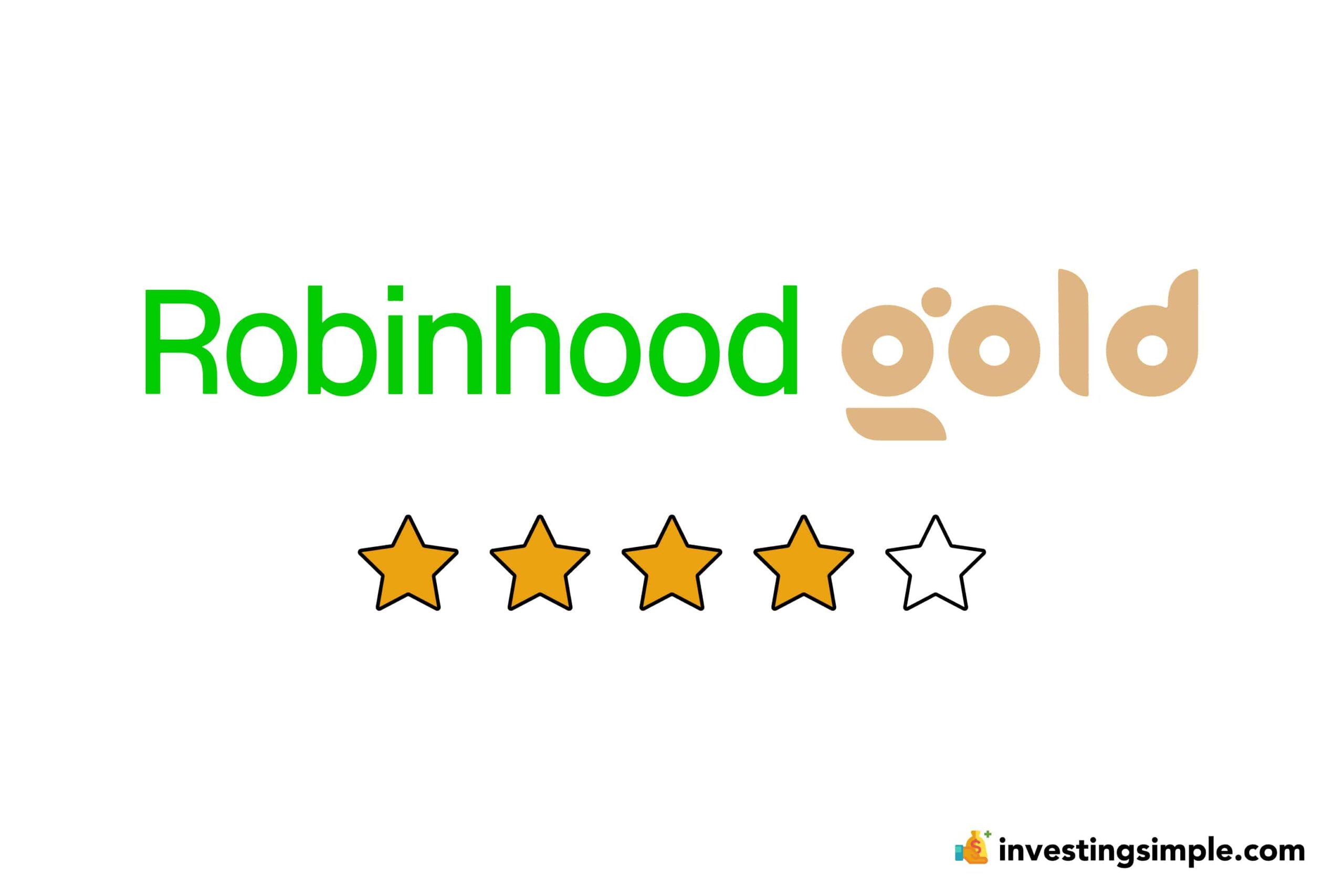





Robinhood is a popular investing app that pioneered the commission-free stock trading revolution.
There is no account minimum to get started and no fees to open an account, transfer funds, or maintain an account. In addition, there are no trading commissions.
However, for just $5/month, you can access a premium subscription called Robinhood Gold.
But the question becomes, is the $5 per month worth it?
Here's our full overview of Robinhood Gold, what features it comes with, and whether or not it's "worth it" for most people.
If you're new to Robinhood, be sure to check out my full Robinhood tutorial video below!
Let's dive in.
As mentioned before, Robinhood Gold is an optional premium subscription you can utilize to unlock additional features for just $5 monthly.
Anyone out there with a Robinhood account can try Robinhood Gold free for 30 days. After that, payments of $5 per month will be automatically withdrawn from the cash balance of your Robinhood account.
Robinhood Gold unlocks the following features:
Additionally, Robinhood recently announced new financial tools and services at their "Lost City of Gold" event, further expanding their offerings to democratize access to financial services.
Now, we will explain in more detail what these features can do for you and why you might want access to them.
If you have extra uninvested cash sitting in your brokerage account, this could be earning you interest. The current rate is up to 4% APY, but it may vary over time due to market conditions.
While you could withdraw that money from Robinhood and move it to a high-yield savings account, this cash sweep feature gives you the convenience of having your money in one place. If you enable the brokerage cash sweep program, your uninvested brokerage cash will automatically be deposited into a network of FDIC-insured banks.
Depending on how much uninvested cash you have with Robinhood, this rate of interest could potentially cover your $5 per month subscription and pay for itself.
With all brokerage accounts, upon depositing cash into your account, you'll need to wait for that cash to settle before you're able to invest it.
It can take up to five business days for your funds to be available on Robinhood.
However, Robinhood will allow up to the first $1,000 of that deposit to become available instantly to all users. With Robinhood Gold, this instant deposit amount will be increased up to $50,000—depending on your account size. They are essentially giving you a very short-term interest-free loan while they wait for your cash to settle.
If having immediate access to your deposits is crucial for your investing strategy, Robinhood Gold might be worth it.
Morningstar is an independent investment research company that publishes its findings and analysis to help investors make better decisions.
As a Robinhood Gold member, you'll be able to access these reports for hundreds of stocks that are available for trading within the Robinhood app.
Depending on where you get your research for investment decisions, this may or may not be worth it to you.
Most individual investors out there are familiar with Level I Market Data.
With this level of detail, you are only able to see minimal information about the bid and ask price for securities.
That's where Level II Market Data comes in. Level II Market Data provides additional data about the bid and ask prices of the securities.
Instead of just showing you the current bid and ask, you'll be able to see the next 10 to 15 bid and ask prices as well as the lot size of each. This provides you with a wider view of the market for each stock.
Depending on your investing strategy, having access to Level II Market Data may or may not be important to you.
Investing on margin means that you’re borrowing money from your broker to buy financial assets. This allows you to invest more money than you could've otherwise in a cash account.
However, with this added leverage, both the return potential and the potential for losses are magnified.
You'll also be paying interest on any cash borrowed above the first $1,000 throughout the duration of the investment. This rate of interest changes over time.
If you start to show losses that are greater than the limit set by the broker, this can lead to Robinhood issuing a margin call.
A margin call occurs when an account's value falls below a certain amount.
When a margin call takes place, the brokerage platform can force the sale of securities or other assets in your account to make up for losses.
In order to prevent this from happening, you can either sell off positions or add more of your own funds to the account.
Margin investing is risky and not recommended for beginners. It's advised to use caution and consider your risk tolerance before engaging in margin trading.
You can still utilize Robinhood Gold without enabling margin investing if you want to.
Robinhood offers the only IRA that adds an instant 3% boost to your contributions. With this match, you can significantly enhance your retirement savings.
The Robinhood Match is either 1% or 3% depending on whether or not you have Robinhood Gold.
If you’re under 50 and maxing out your $7,000 annual IRA Contribution, you’d be getting a $70 Match from Robinhood at the 1% level, or $210 assuming you had Robinhood Gold and earned 3%.
If you deduct the Gold Subscription of $60 a year, your still getting $150 a year as an extra kick-in.
If you’re over 50 and contributing the maximum of $8,000, that would be an $80 Match at 1% or $240 at 3%.
After deducting the Gold subscription, your bonus would be $180 a year.
Depending on whether or not you have a Robinhood Retirement account, the Robinhood Gold 3% match has the potential to pay for the entire subscription and provide you with an additional bonus above that.
This also depends on whether or not you max out your annual IRA contributions.
For active traders, features like Level II market data and larger instant deposits can be invaluable for making quick decisions and maximizing trading opportunities.
For long-term investors focusing on retirement savings, the 3% IRA match can significantly boost their retirement fund.
At the end of the day, the answer to this question comes down to whether or not you plan on taking full advantage of what Robinhood Gold has to offer.
Ask yourself the following questions:
If the answer to some (or all) of these questions is yes, it might be something to consider.
Comparison to Other Services: Robinhood Gold offers competitive features compared to other premium investment services, with a focus on accessibility and low costs. For instance, while other platforms may offer similar features, Robinhood's pricing remains one of the most competitive in the market.
Try It Free: You can try Robinhood Gold for free for 30 days to see if you actually use it!
Additionally, Robinhood recently announced new financial tools and services at their "Lost City of Gold" event, highlighting their commitment to expanding offerings like Robinhood Banking, which is set to provide more inclusive financial services.
Overall: Robinhood Gold offers a range of benefits that can enhance your investment strategy, especially with its high-yield cash returns, larger instant deposits, and retirement savings boost. If you find value in these features, the $5 monthly subscription could be a worthwhile investment.